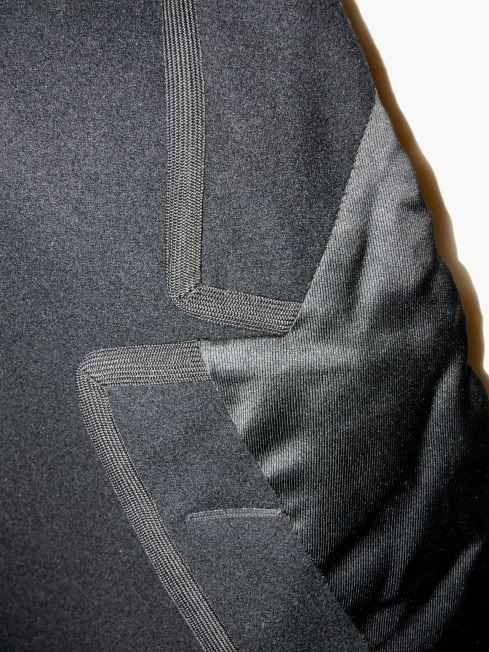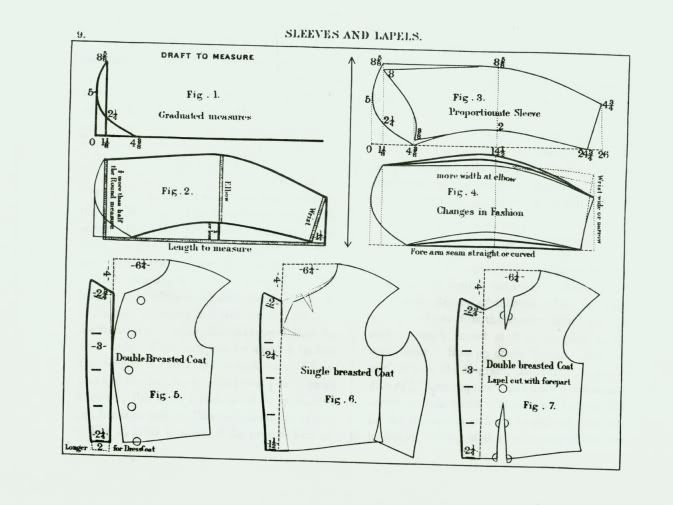Front overview of the coat showing shiny facings on the lapels and braid trim. Based on the straight sleeve shape I believe this coat most likely dates from the 1870's - 80's.

Closeup of the collar showing fine quality wool, details of braiding and facing and a beautifully executed buttonhole.

Closeup of cuff. This is trimmed with braid which is mitred to create the illusion of a slit, but is non-functional. Buttonholes are blind. Silk patterned buttons match those of the front

Rear view showing the trim continuing round the collar and down the tail vent. Note that it stops at the bottom of skirt, which to the best of my recollection was raw.

Enjoy,
Jim R.

